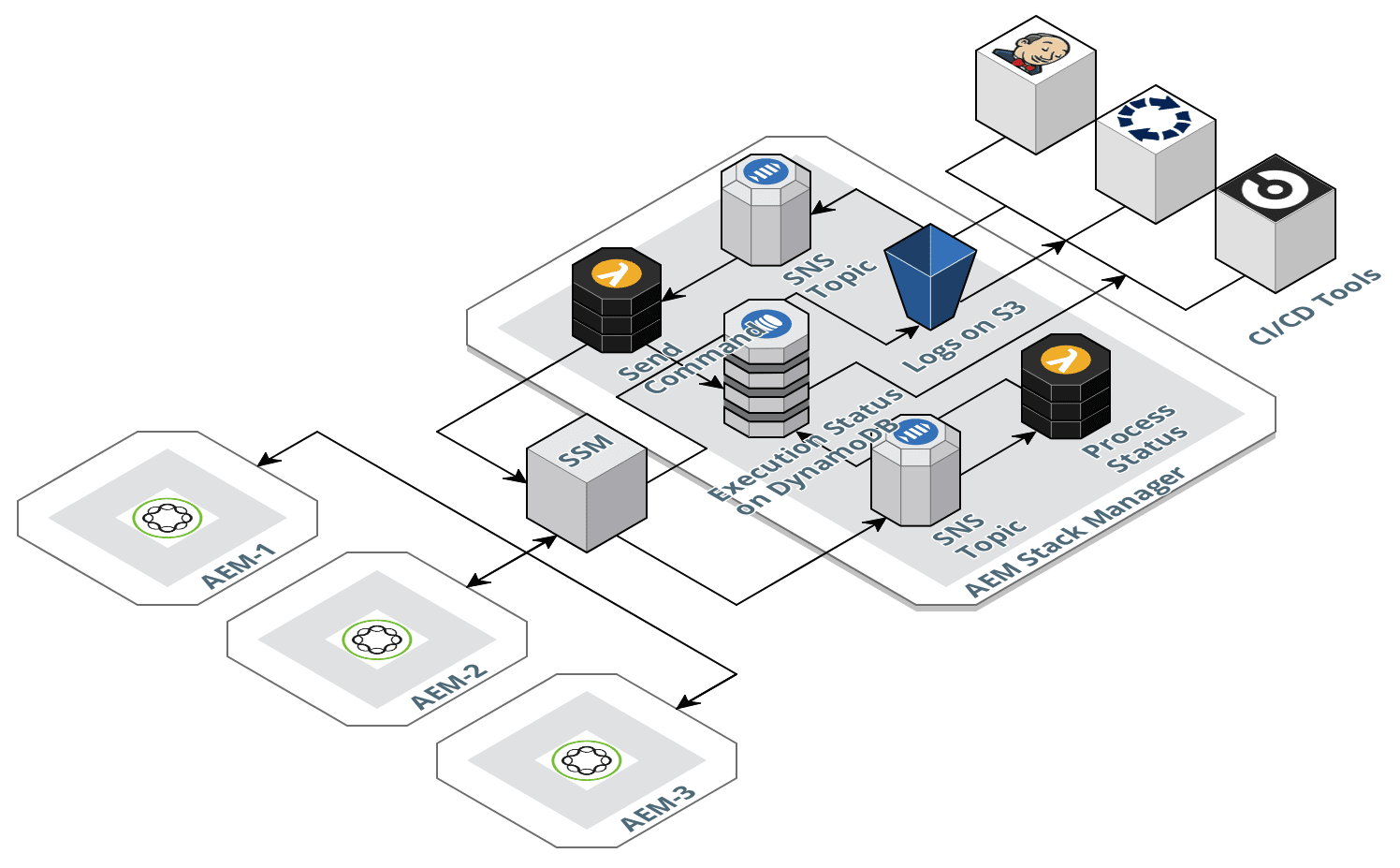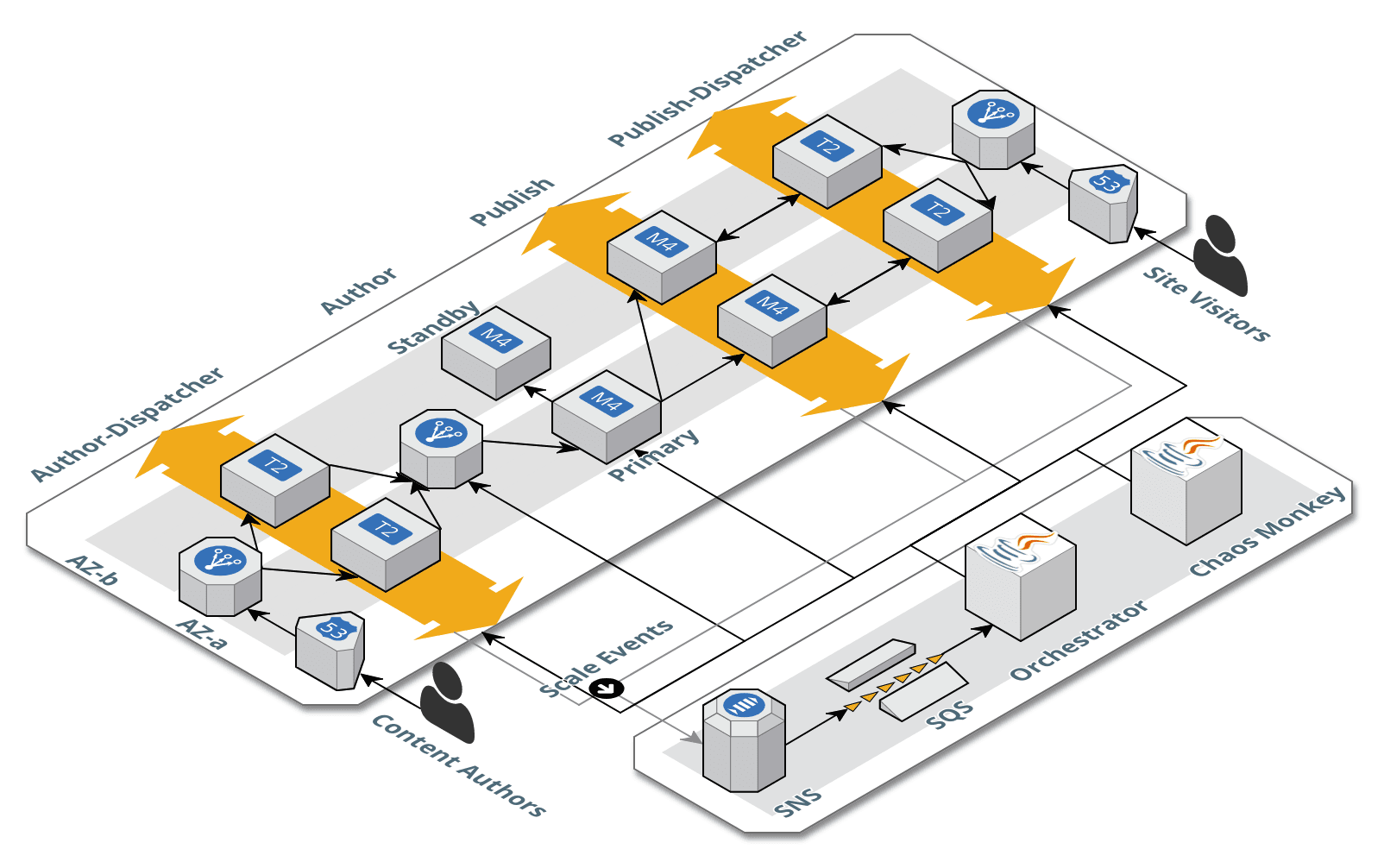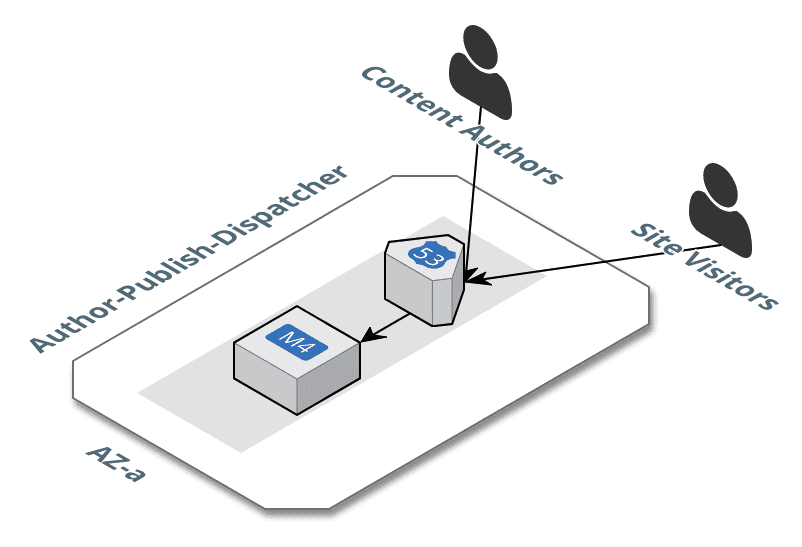A set of Ansible playbooks for building Adobe Experience Manager (AEM) architectures on AWS using CloudFormation stacks.
Stack Builder has been designed with a focus on modularity, allowing the separation between network and application components, while also providing a flexible way to support multiple architectures that run a combination of the following components across multiple AEM versions:
author-primary- contains AEM Author running in primary modeauthor-standby- contains AEM Author running in standby modepublish- contains AEM Publishauthor-dispatcher- contains AEM Dispatcher with author-dispatcher configuration, sitting in front ofauthorcomponentpublish-dispatcher- contains AEM Dispatcher with publish-dispatcher configuration, sitting in front ofpublishcomponentorchestrator- contains AEM Orchestratorchaos-monkey- contains Chaos Monkeyauthor-publish-dispatcher- contains AEM Author, AEM Publish, and AEM Dispatcher
Stack Builder currently supports the following AEM architectures:
- Full Set (diagram) - includes AEM Author, Publish, and Dispatcher on separate EC2 instances with blue-green deployment, auto-recovery, auto-scaling, backup, and compaction support, suitable for all types (e.g. production, staging, testing, and development) of environments
- Consolidated (diagram) - includes AEM Author, Publish, and Dispatcher on a single EC2 instance with backup and compaction support and a much lower AWS cost footprint, suitable for testing and development environments
Other than the above AEM architectures, Stack Builder also provides the following utilities:
- Stack Manager(diagram) - includes AEM Stack Manager, set of AWS Lambda functions that will execute AEM functionalities via an SSM agent
- Network - includes CloudFormation templates for creating VPC, subnets, and some sample NAT Gateway and Bastion set up
Learn more about AEM AWS Stack Builder:
- Installation
- Configuration
- Usage
- Testing
- AWS Resources
- AWS System Tags
- Customisation Points
- Descriptors
- Logs
- Permission Types
- Snapshot Types
- Frequently Asked Questions
- Troubleshooting Guide
- Upgrade Guide
- Stacks Structure
- Presentations
AEM AWS Stack Builder is part of AEM OpenCloud platform.
-
Either clone AEM AWS Stack Builder
git clone https://github.com/shinesolutions/aem-aws-stack-builder.gitor download one of the released versions -
Install the following required tools:
Alternatively, you can use AEM Platform BuildEnv Docker container to run Packer AEM build targets.
-
Resolve the Python packages dependencies by running
make deps
- Set up the required AWS resources
- Create configuration file
- Set up the configuration files by running
make config config_path=<path/to/config/dir> - Download open source library artifacts and upload them to S3 by running
make library config_path=<path/to/config/dir>
Ensure configuration file for network has been set up.
From the above base configuration, generate template network configuration file:
make generate-network-config stack_prefix=<network_stack_prefix> config_path=<path/to/config/dir>
The above is a once off action which will create a bootstrap network configuration file at <path/to/config/dir>/network.yaml, this will save you the trouble of manually creating a long configuration file. Alternatively, you can create the network configuration file manually.
Create VPC stack:
make create-vpc stack_prefix=<network_stack_prefix> config_path=<path/to/config/dir>
Create network resources stack:
make create-network stack_prefix=<network_stack_prefix> config_path=<path/to/config/dir>
Alternatively, if you don't have the permission to create VPC and/or network resources, you can create a network-exports stack that contains the details of your subnets:
make create-network-exports stack_prefix=<network_stack_prefix> config_path=<path/to/config/dir>
Ensure configuration file for AEM Stack Manager has been set up.
Create AEM Stack Manager stacks:
make create-stack-manager stack_prefix=<stack_manager_stack_prefix> config_path=<path/to/config/dir>
Ensure configuration file for AEM Full-Set architecture has been set up.
The simplest way to create this AEM architecture is by standing up both full set prerequisites and main stacks in one go:
make create-full-set stack_prefix=<fullset_stack_prefix> config_path=<path/to/config/dir>
However, it is also possible to separate the prerequisites from the main stacks. A use case scenario for this set up is when you want to keep the prerequisites stack around while creating/deleting the main stack within an environment, this allows you to cut some cost and to speed up environment standing up time from the second time onward.
Create prerequisites stack which contains the instance profiles, security groups, and messaging SNS SQS resources:
make create-full-set-prerequisites stack_prefix=<fullset_prerequisites_stack_prefix> config_path=<path/to/config/dir>
Create main stack which contains EC2 and Route53 resources:
make create-full-set-main stack_prefix=<fullset_main_stack_prefix> prerequisites_stack_prefix=<fullset_prerequisites_stack_prefix> config_path=<path/to/config/dir>
Ensure configuration file for AEM Consolidated architecture has been set up.
The simplest way to create this AEM architecture is by standing up both full set prerequisites and main stacks in one go:
make create-consolidated stack_prefix=<consolidated_stack_prefix> config_path=<path/to/config/dir>
It is also possible to separate the prerequisites from the main stacks. A use case scenario for this set up is when you want to reuse the same prerequisites stack for multiple main stacks. Please note that having a one to many mapping between prerequisites stack to multiple main stacks is only applicable for development environments, and not for production.
Create prerequisites stack which contains the instance profiles and security groups:
make create-consolidated-prerequisites stack_prefix=<consolidated_prerequisites_stack_prefix> config_path=<path/to/config/dir>
Create main stack which contains EC2 and Route53 resources:
make create-consolidated-main stack_prefix=<consolidated_main_stack_prefix> prerequisites_stack_prefix=<consolidated_prerequisites_stack_prefix> config_path=<path/to/config/dir>
You can run integration test for creating, testing, and deleting the AEM Stack Manager, AEM Consolidated, AEM Full-Set environments using the command make test-integration test_id=<sometestid>, which downloads the dependencies from the Internet.




